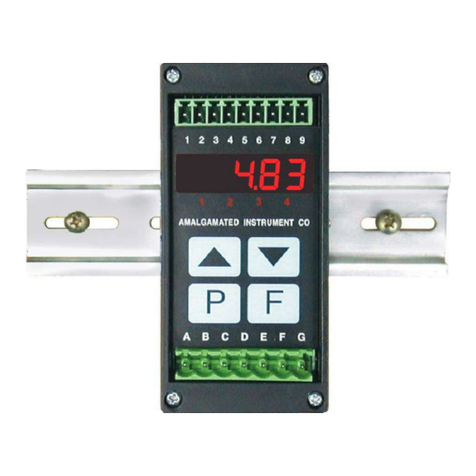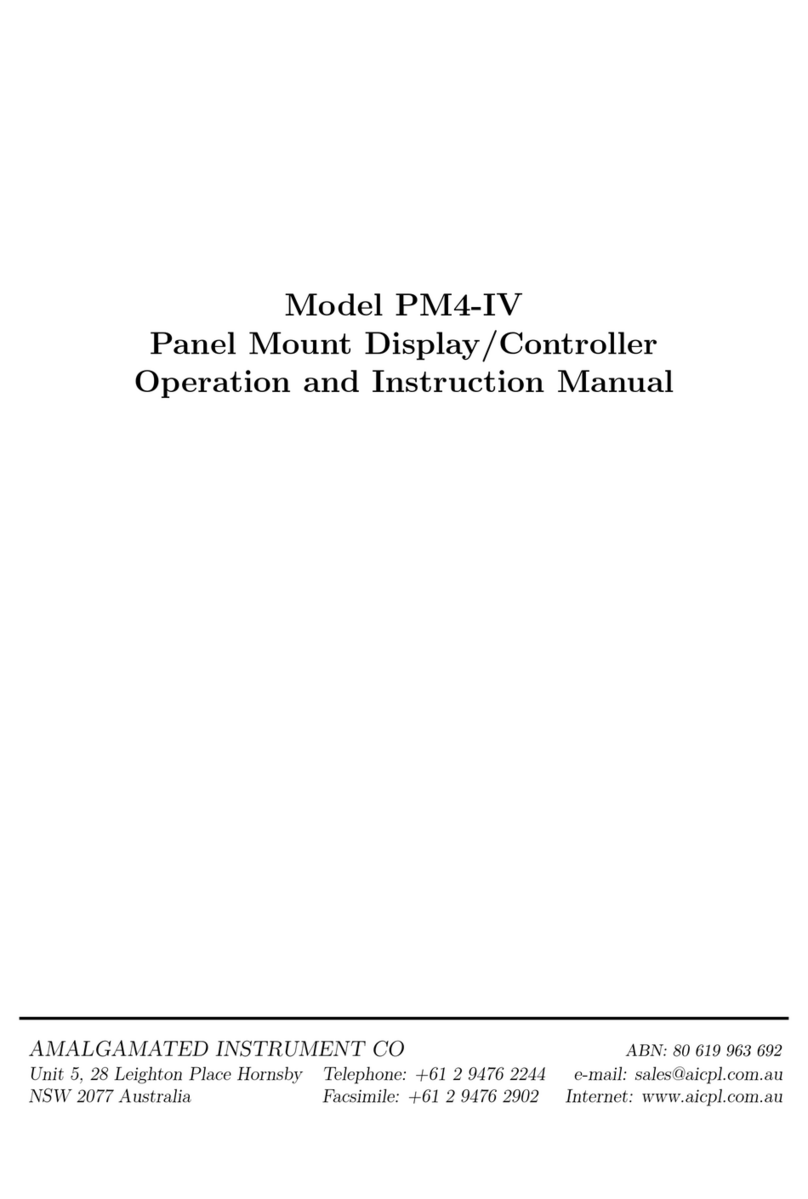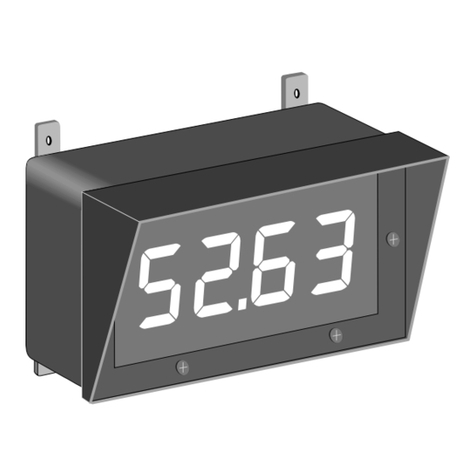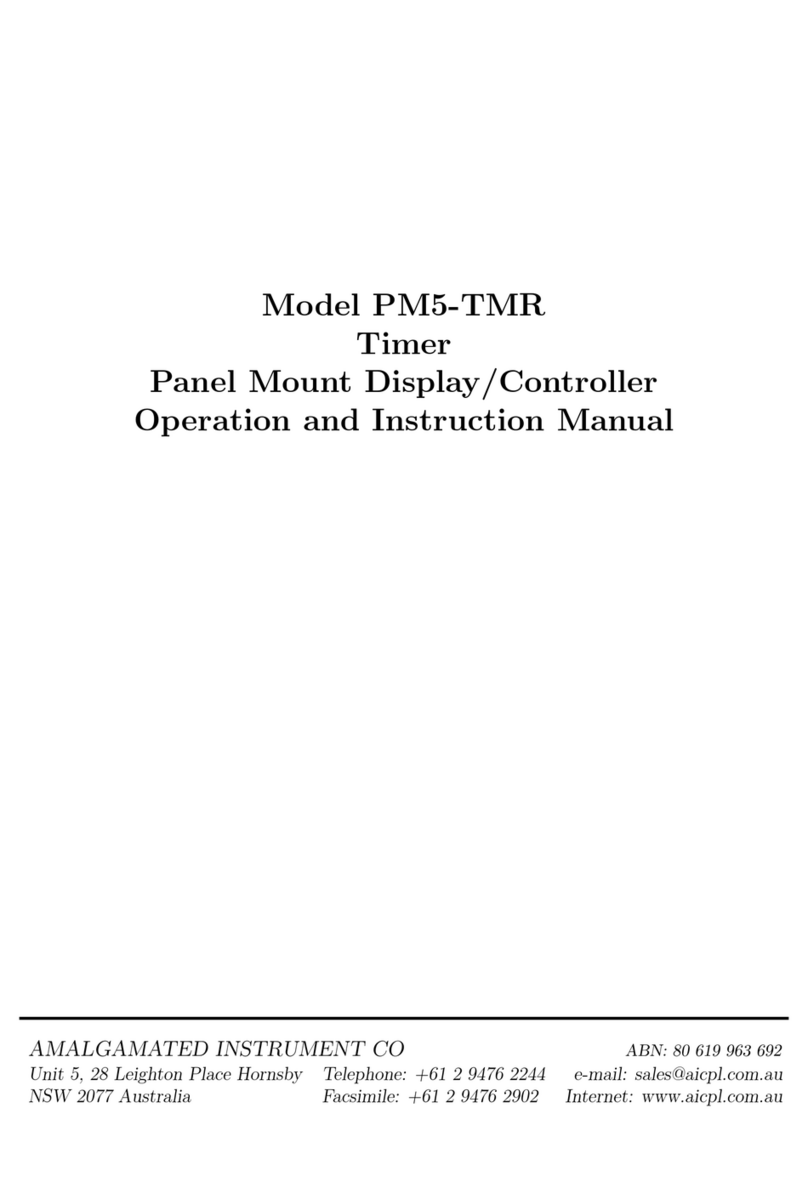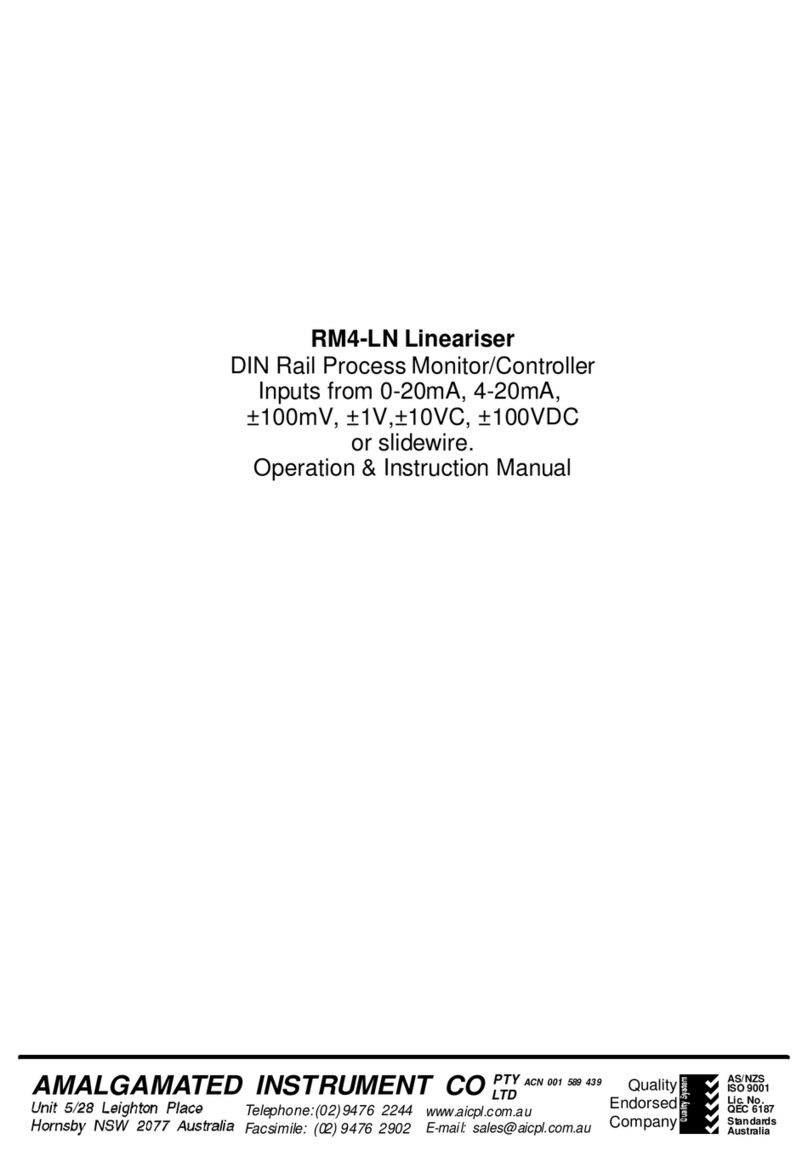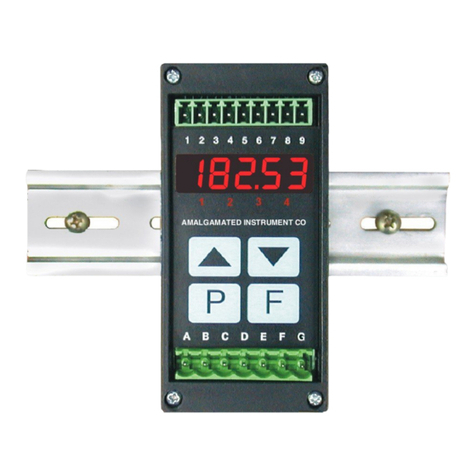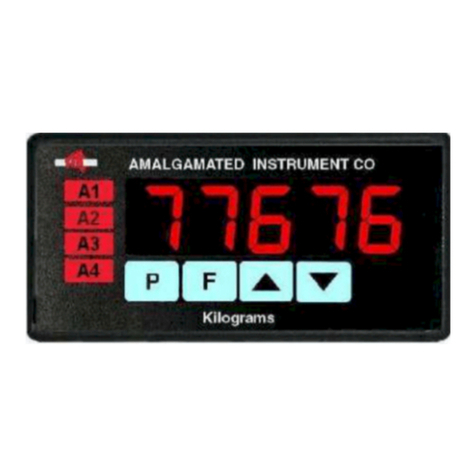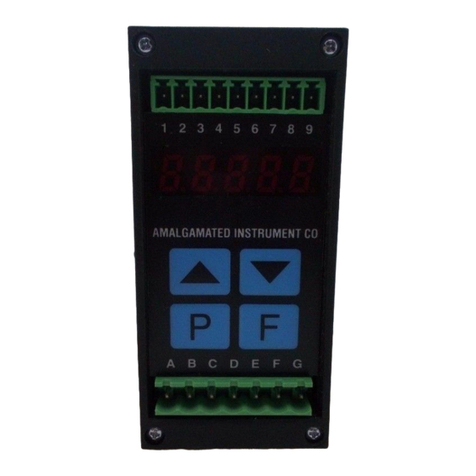
1 Introduction
This manual contains information for the installation and operation of the PM4 Conductivity
/Resistivity/ppm Monitor. The PM4-CO is a general purpose auto ranging monitor which may be
configured to accept an input from a range of conductivity cells with cell constants ranging from
K=0.01 to K=100. Ranges and typical cell factors are shown in the table below.
Cell Range Guide
Cell K uS/cm uS/m mS/cm mS/m
factor
K=0.01 0 – 125 @ 25oC 0 – 12,500 @ 25oC 0 – 0.125 @ 25oC 0 – 12.5 @ 25oC
K=0.1 0 – 1,250 @ 25oC 0 – 125,000 @ 25oC 0 – 1.25 @ 25oC 0 – 125 @ 25oC
K=1.0 10 – 12,500 @ 25oC – 0.01 – 12.5 @ 25oC 1 – 1,250 @ 25oC
K=2.0 20 – 25,000 @ 25oC – 0.02 – 25 @ 25oC 2 – 2,500 @ 25oC
K=10.0 100 – 125,000 @ 25oC – 0.1 – 125 @ 25oC 10 – 12,500 @ 25oC
K=20.0 200 – 250,000 @ 25oC – 0.2 – 250 @ 25oC 20 – 25,000 @ 25oC
A second input is provided for a temperature sensor for automatic temperature compensation.
The PM4 can accept 100Ω RTD, 1000Ω RTD, LM335 or 100Ω thermistor or UU25J1 thermistor
type temperature sensors. The default display can be set to either resistivity, conductivity, ppm
or % by weight of Sodium Chloride. The display will toggle between temperature/conductivity or
temperature/resistivity or temperature/ppm or temperature/%NaCl indication by pressing either
the ^or vbutton. The conductivity display units can be set to show either milliSiemens per
metre, milliSiemens per centimetre, microSiemens per metre or microSiemens per centimetre. The
resistivity display is in MΩ.
Calibration, setpoint and other set up functions are easily achieved by push buttons (located
at the rear panel and/or front panel depending on model). A standard inbuilt relay provides
an alarm/control function, additional relays, retransmission and DC output voltage may also be
provided. A special “blowdown” relay operation is available for units fitted with 2 relays.
Unless otherwise specified at the time of order, your PM4 has been factory set to a standard
configuration. Like all other PM4 series instruments the configuration and calibration are easily
changed by the user. Initial changes may require dismantling the instrument to alter PCB links,
other changes are made by push button functions.
Full electrical isolation between power supply, conductivity/resistivity cell and retransmission out-
put is provided by the PM4, thereby eliminating grounding and common voltage problems. This
isolation feature makes the PM4 ideal for interfacing to computers, PLCs and other data acqui-
sition devices. The single analog output option allows the choice of temperature or main display
(conductivity or resistivity, %NaCl or PPM) output. The dual analog option allows both temper-
ature and main display to be retransmitted. Analog outputs can be set for linear or logarithmic
(up to 5 decades) output. Analog output 1 can alternatively be set for PI control operation.
The PM4 series of Panel Mount Monitors are designed for high reliability in industrial applications.
The high brightness LED display provides good visibility, even in areas with high ambient light
levels. The high contrast LCD displays provide good visibility and are ideal for battery powered
applications. LED models are available in 4 digit (20mm), 5 digit (14.2mm) with keypad, 6 digit
(14.2mm) with keypad, and 20 segment bar graph with 5 digit (7.6mm) versions. LCD models are
available in 4 digit (12.7mm) and 6 digit (12.7mm) versions.
PM4COMAN-2.2-1 3 of 48
